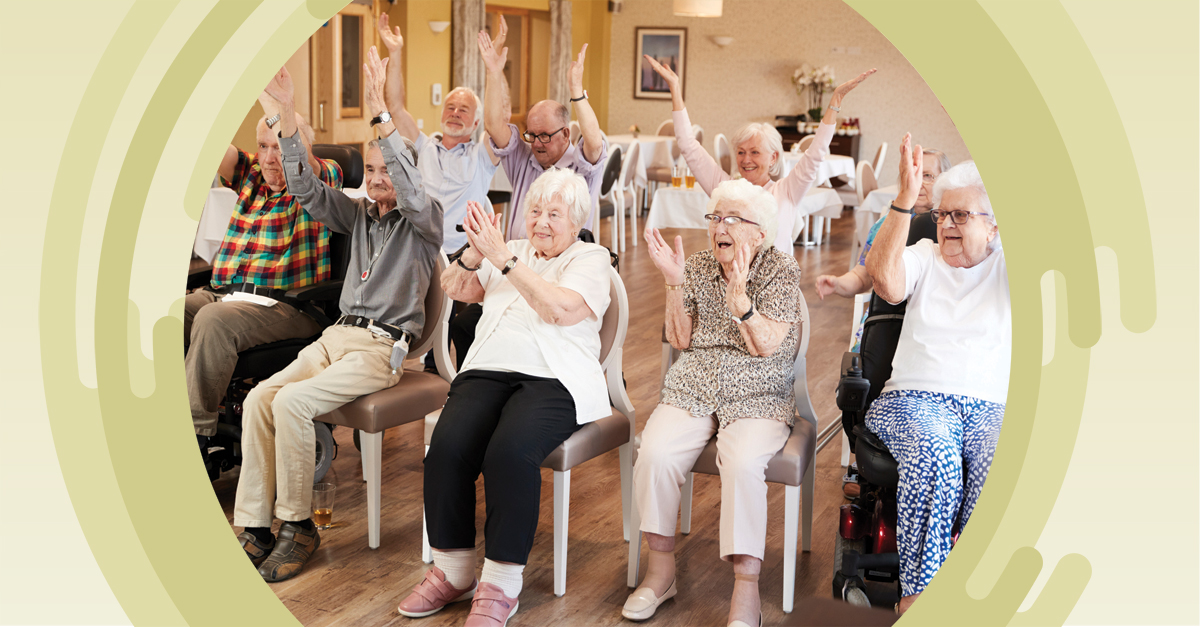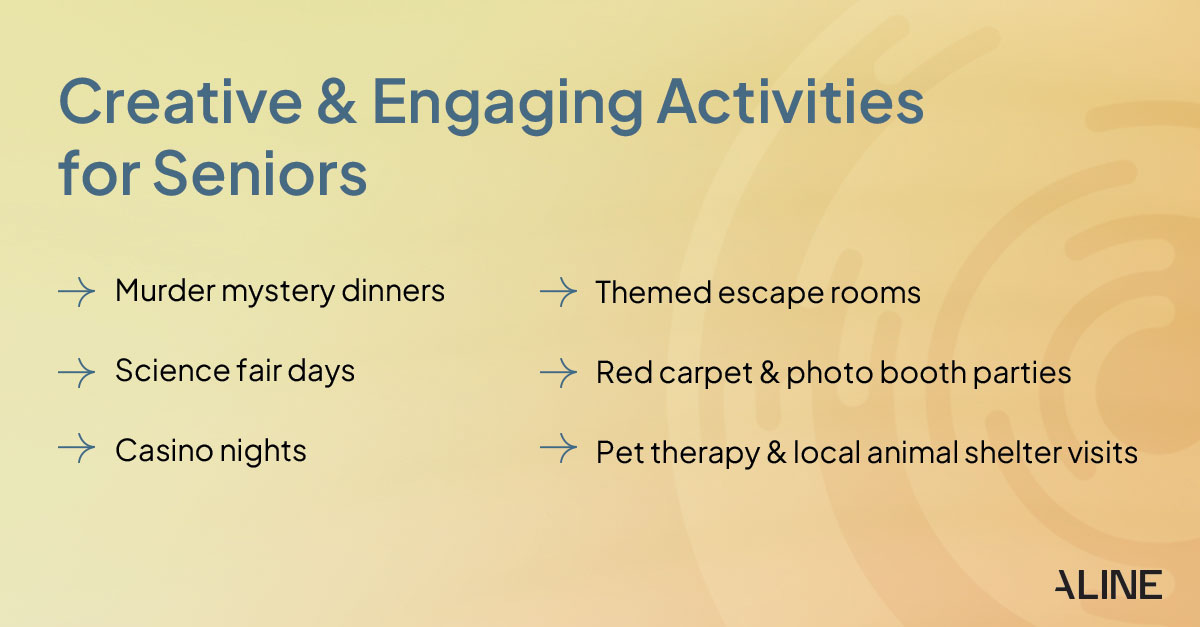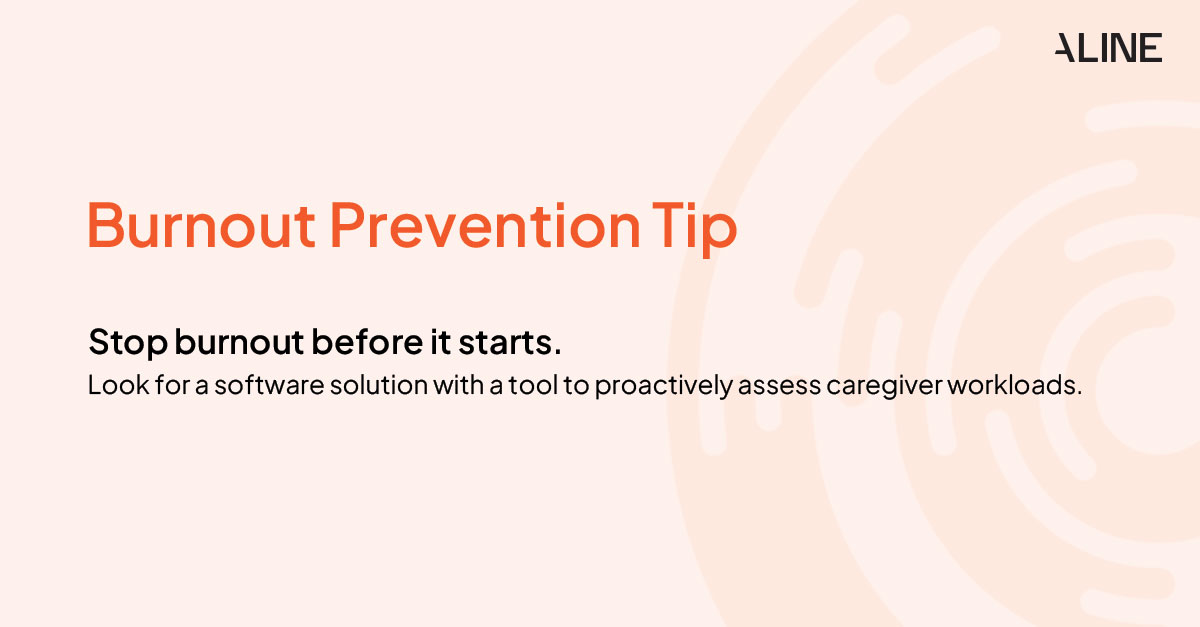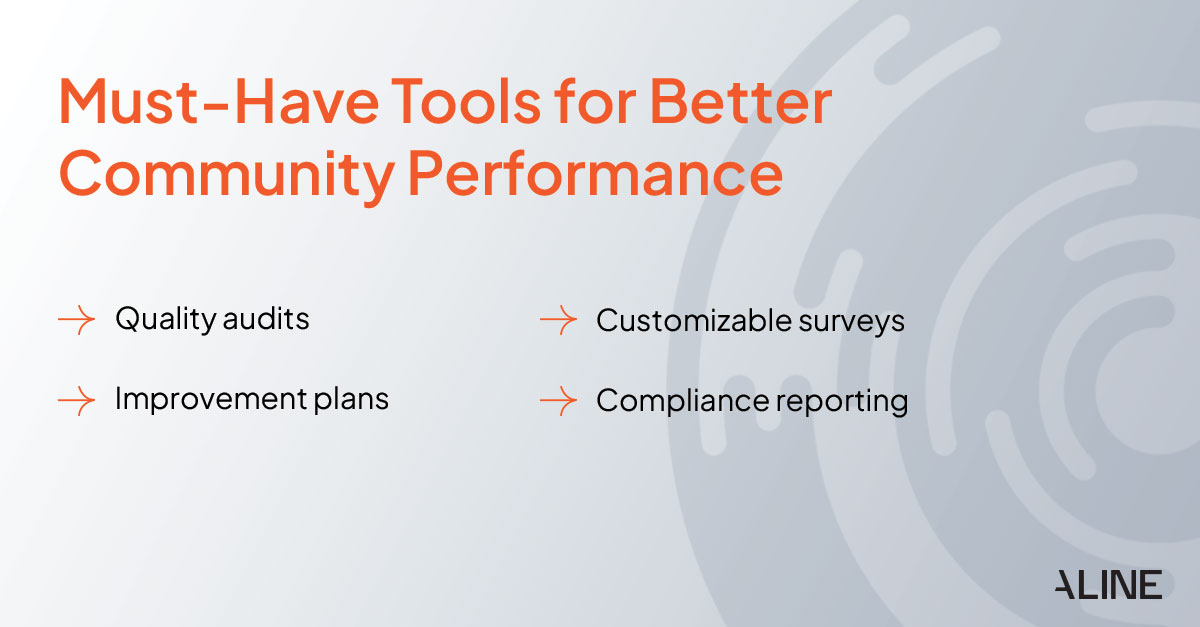5 Strategies for Increasing Senior Living Resident Retention and Engagement
Improve your senior living community’s long-term growth potential with better resident retention and engagement.

Improve your senior living community’s long-term growth potential with better resident retention and engagement.
Published on: August 14, 2024
Last updated: August 13, 2025

Contents
The long-term success of any senior living community largely ties to increasing resident retention and engagement. Engaged residents are healthier, more socially active, and less prone to costly health challenges associated with inactivity.
By bettering health outcomes and nurturing vibrant social connections, your residents and their families will not only be more likely to refer other seniors to your community, increasing your prospective resident pool, but they’re also more likely to stay for the long term. Of course, this directly contributes to more sustainable revenue growth, enhanced organizational stability, and a positive reputation as a trusted senior care provider.
Let’s explore three effective strategies to foster a supportive environment where residents thrive. These strategies not only deepen residents’ connections within the community but also enhance their overall well-being for a positive resident experience.
Creating a more personalized resident experience doesn’t start at move-in — it begins at the initial contact during the sales process. Transitioning to senior living often comes with high emotions, including skepticism, and building trust takes a thoughtful, strategic approach to sales conversations that focus on untangling any reservations.
As the sales team captures these individual preferences, such as personal interests, care needs, and lifestyle choices, they should record them in a senior living CRM that’s accessible by the care and engagement team. This unified CRM experience, like offered with Aline CRM, ensures that all relevant staff are informed and can provide a seamless transition from sales to care.
When a prospect visits for a tour, the care and engagement team, already familiar with the prospect’s needs thanks to the CRM, can tailor the discussion to reassure the prospect that they can meet their specific needs and preferences. This level of preparedness significantly builds confidence that your community is the right choice.
Upon move-in, the care and engagement team can use the detailed preferences stored in the CRM to personalize the resident’s room to reflect their tastes or arrange welcome activities aligned with their interests. This personal touch helps residents feel at home from day one.
While the sales team could manually relay this information to the care and engagement team, the reality is that senior living sales teams are often understaffed and lack the time to prepare detailed briefs for every new resident. Leveraging a unified CRM not only saves valuable time but also reduces the risk of miscommunication, ensuring that every resident’s introduction to the community is as smooth and welcoming as possible.

Effective communication with both residents and their families is crucial for supporting an engaged and satisfied community within senior living communities. While resident communication is your top priority, engaging their families is also important as they often influence decisions and can champion your community.
To maintain timely and open lines of communication, leveraging user-friendly, real-time engagement solutions, like Aline Engage, is essential. This technology empowers staff to quickly and easily share important information, including:
This proactive communication not only boosts socialization among residents, contributing to their overall well-being, but it also reassures families that their loved ones are actively cared for and thriving. On top of supporting engagement, this transparency builds long-term trust for better retention among residents.

To maintain a vibrant senior living community, it’s essential to regularly assess attendance rates for your resident programming. If certain activities consistently show poor participation, it’s time to dig deeper and adapt.
Engaging directly with residents to solicit their ideas and preferences brings a personal touch to your programming. This collaborative approach not only customizes activities to the unique tastes and interests of your community but also creates a sense of ownership and satisfaction among residents.
Often, even minor tweaks to the timing, format, or presenter based on resident feedback can lead to a noticeable boost in engagement and attendance. By continuously adapting and refining your activities with direct input from those who participate, you can ensure your programming remains dynamic and deeply resonant with the community.
Introducing pilot programs is another strategic way to explore new options without making extensive commitments. These trials allow you to experiment with new activities based on resident suggestions or emerging trends in senior care. From a sample size, you can then evaluate the event’s effectiveness and popularity on a smaller scale and build or adjust from there.
And don’t forget your engagement software — the RSVP functionality is a powerful tool for tracking event sign-ups as well as identifying patterns of disengagement. This feature allows you to pinpoint residents who may not regularly participate and might benefit from personalized outreach. Staff can proactively offer support, ask for feedback, and encourage participation in a way that resonates with those individuals. With this targeted approach, you can both re-engage residents and ensure everyone feels connected and valued within the community.

Attracting and retaining staff have long remained major challenges in senior living with 78% of owners and operators identifying recruitment as the biggest hurdle and 67% citing high turnover rates, according to the National Investment Center for Seniors Housing & Care (NIC). These issues often stem from burdensome administrative tasks that detract from caregivers’ primary role — resident care. As this leads to turnover, many communities struggle to maintain the necessary staff-to-resident ratios that ensure a positive resident experience.
Care management software, such as Aline Care, transforms these tedious, error-prone processes into streamlined, digital workflows to significantly improve staff working conditions. This software provides automated care assessments and real-time mobile access to extensive resident information and preferences, enhancing a caregiver’s ability to provide responsive, proactive care and connect meaningfully with each senior.
With these improvements, caregivers won’t feel the same burnout as they spend more time delivering direct, one-on-one care to residents, which is crucial for building a supportive and engaged community environment. Additionally, better care delivery helps residents stay healthier and live longer in your community.

Maintaining resident retention requires a proactive approach to meeting and exceeding care standards. Given the complexities of operating a senior living community, this is difficult without the right tools.
So how do you simplify the process? Quality management software, like Aline Quality, is essential for gaining real-time insights into your community’s service performance and compliance, enabling you to remain competitive and responsive to resident needs.
Using this type of senior living software, you can incorporate customizable digital surveys to continuously monitor and refine your services. This direct feedback mechanism allows for regular quality checks, ensuring your community not only meets but exceeds performance and compliance standards.
If any issues arise from these assessments, the software promptly initiates corrective plans. Implementing this systematic approach to quality assurance addresses minor issues before they escalate to create a culture of continuous improvement. By consistently improving service quality, your community can boost resident satisfaction and strengthen its reputation as a top-tier provider of senior care.

Creating engaging programs and meeting residents’ unique daily care needs is one of the biggest challenges for many senior living communities, but it’s critical to driving sustainable occupancy and revenue growth. To help you implement the right solutions to support these retention and engagement strategies, download our white paper “Delivering Better Care With Better Technology.” You’ll learn how to leverage advanced software solutions that enhance personalized care, streamline operational efficiencies, and create deeper connections within your community.


Amanda McGrory-Dixon
Amanda McGrory-Dixon is the content marketing manager at Aline, where she shares expert insights on how senior living communities can streamline operations, enhance resident satisfaction, and drive sustainable growth. With a deep understanding of industry trends and technology, she helps operators navigate challenges and implement data-driven strategies to improve efficiency, profitability, and care outcomes.
Blogs, stories and studies from the forefront of senior living operations

Lead generation surveys give senior living operators the data they need to understand their market, uncover new opportunities, and drive occupancy growth.

Prospect-centered selling helps senior living operators convert more leads and achieve occupancy goals through a more personalized, empathetic approach.

Gain insight into senior living pricing strategies for community success. Explore how Aline’s software optimizes revenue and operations

Overcome the biggest senior living financial challenges, including operational costs and occupancy rates, with interconnected software

Take a look at how senior living software options, like Aline, can elevate operations, resident care, and ROI

Enhance efficiency, accuracy, and resident satisfaction by integrating a POS system into your senior living dining operations
We’re using cookies on this site to improve your experience. Cookies help us learn how you interact with our website, and remember you when you come back so we can tailor it to your interests.
You can find out more about cookies and usage on our cookie policy page.
Some of these cookies are essential, while others help us to improve your experience by providing insights into how the site is being used.
For more detailed information on the cookies we use, please check our privacy policy
Your experience is important to us. We’re redirecting you to our new Aline website, where you’ll discover how our complete suite of senior living solutions can help you grow occupancy and revenue, optimize operations, and enhance resident care.
For more information, you’re welcome to read our statement on our merger. To continue your web experience, simply close this notification.
Your experience is important to us. We’re redirecting you to our new Aline website, where you’ll discover how our complete suite of senior living solutions can help you grow occupancy and revenue, optimize operations, and enhance resident care.
For more information, you’re welcome to read our statement on our merger. To continue your web experience, simply close this notification.
Your experience is important to us. We’re redirecting you to our new Aline website, where you’ll discover how our complete suite of senior living solutions can help you grow occupancy and revenue, optimize operations, and enhance resident care.
For more information, you’re welcome to read our statement on our merger. To continue your web experience, simply close this notification.
Your experience is important to us. We’re redirecting you to our new Aline website, where you’ll discover how our complete suite of senior living solutions can help you grow occupancy and revenue, optimize operations, and enhance resident care.
For more information, you’re welcome to read our statement on our merger. To continue your web experience, simply close this notification.
Aline Innovation Summit 2026: Registration Now Open!
Connect with senior living leaders, innovators, and industry peers May 11-13, 2026, in Frisco, TX to explore the latest innovations, proven strategies, and best practices shaping the future of senior living. View details and register today.